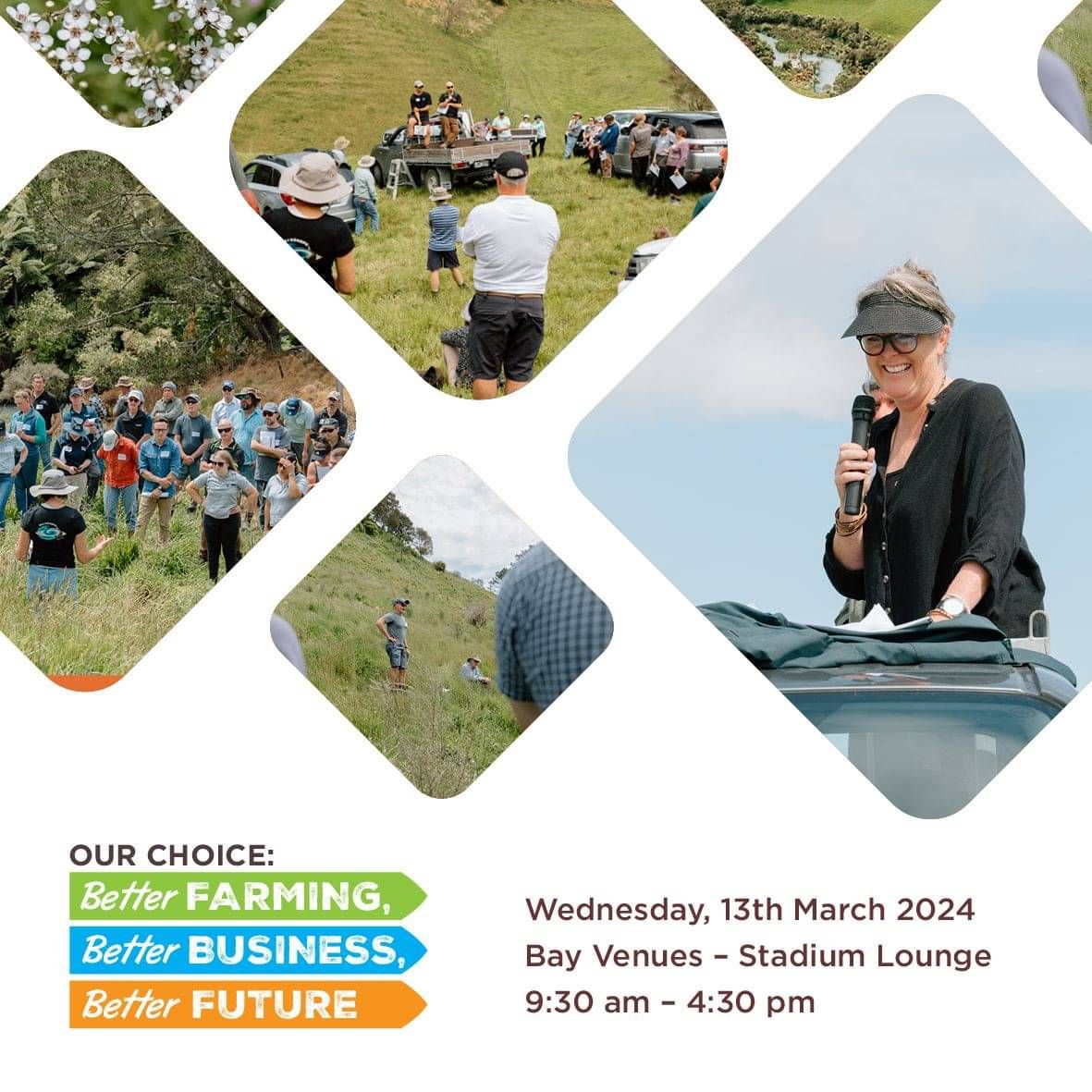Wai Kōkopu, the community-led programme to replenish and revitalise the health of the Waihī Estuary.
Explore the highlights of our recent agricultural summit, "Our Choice: Better Farming, Better Business, Better Future" Agri Summit, held on March 13, at the Bay Venues – Stadium Lounge.
With a fantastic turnout and some great insights from speakers, delve deeper into the event's success, learn about our presenters, and access their invaluable presentations.

Become a member
Join our community of dedicated individuals committed to the preservation and enhancement of the Waihi estuary and our local community. As a member, you play a crucial role in supporting our initiatives and programs aimed at ensuring the long-term health of our environment.
By becoming a member of Wai Kōkopu, you unlock exclusive benefits and opportunities to stay informed about our ongoing work. Your membership fees directly contribute to the sustainability and growth of our organisation, empowering us to undertake various projects and activities for the betterment of our community.
The Waihī estuary, located in Maketū, is in a poor and declining ecological state and does not consistently meet guidelines for safe swimming and shellfish gathering.
Our programme is on a mission to change this. Together, with the community, we are harnessing the power of catchment-wide collaboration and innovation to build healthy, more resilient waterways that will heal the Waihī estuary.
The unhealthy state of the Waihī estuary
One of the worst
It’s one of the five most degraded estuaries in the country.
Lost 97% of wetlands
Just 3% of the wetlands that once supported large native bird and fish populations remain.
430%
E. Coli levels in the estuary continue to rise and are around 430% higher than what is safe to eat. We need to bring E.Coli down by at least 50%.
Unsafe food gathering
Poor freshwater quality feeding the estuary has resulted in seagrass loss, algal blooms and shellfish that are regularly unsafe to eat.
High nitrogen
Nitrogen and phosphorus loads to the estuary are high; we need to bring total nitrogen down by 66% and Phosphorus down by 30%.
Unsafe swimming
Mahinga kai (natural resource) and recreational values have declined.
Our programme
To return the Waihī estuary to a healthy ecological state, we are focusing on initiatives from bespoke environmental farm plans to riparian planting and educational sessions at a sub-catchment and catchment level.
By fostering awareness and shared responsibility for the health of the Waihī Estuary, we hope to empower our community to embrace better practices, decisions and outcomes for the lands, waters and biodiversity.
Fly the catchment
Explore Our Audited Accounts
Stay informed about our financial transparency. Before our Annual General Meeting (AGM), we provide our audited accounts for public review, ensuring you understand our financial performance. Additionally, we make AGM minutes and agendas available early, promoting an informed and inclusive atmosphere during meetings. Your involvement and questions are valued. Contact us for more information. Thank you for your ongoing support, helping us achieve our shared goals.
The Waihi Estuary
Bay of Plenty


